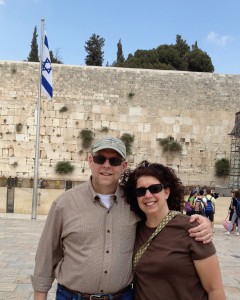
Open the Gospel of Luke, right there in chapter one and begin reading. The physician-scribe throws us right into the middle of the action first with the warm-up of the dramatic events surrounding the birth of John the Baptist and then the history-splitting incarnation of the Lord Jesus. Luke has penned a real page-turner!
A hinge of sorts happens in chapter 3, as the cousins come together in the river. Jesus asks John to baptize him, and eternity invades finite space and time:
“When all the people were being baptized, Jesus was baptized too. And as he was praying, heaven was opened and the Holy Spirit descended on him in bodily form like a dove. And a voice came from heaven: “You are my Son, whom I love; with you I am well pleased.” – Luke 3:21-22
In this heart-stopping moment of theophany, the Father calls the son of Joseph His Son.
If you were writing this story, where would you go from this eternity-soaked moment?
Luke makes what has always seemed to me to be a peculiar choice. He hits a pause button on the advancing action and recounts Joseph’s geneaology all the way back to Adam. The placement of this information has always felt a little random, as if Luke thought, “Oh man, before I get into the next chapter of Jesus’ ministry, I’d better insert some back story.”
(I know, I know. They didn’t even have words for modern literary conventions like ‘back story’ in Luke’s day.)
At the moment the Father affirmed Jesus as His beloved Son, Luke is directed by God as he scrawled his inspired narrative to turn his gaze on Jesus’ earthly father, Joseph. I know these family trees are vitally important. But the placement of this particular one has been a puzzlement to me.
Today when I read it, a 7-volt lightbulb tried to light up in my head. Luke opens this geneology with these words: “Now Jesus himself was about thirty years old when he began his ministry. He was the son, so it was thought, of Joseph…” (vs. 23)
“So it was thought” – a phrase meant to remind us that Joseph wasn’t Jesus’ biological father – and then immediately Luke launches into Joseph’s family history. The history links Jesus in a mirrored similarity to the genealogy of Mary recorded in the first chapter of Matthew. Joseph’s history shows that he is of the family of the chosen people, and prophetically linked to his great-, great-, great- (etc.) grandpa King David and to Abraham before him. He is the right man to shape the Child’s life, to tuck him in at night, to teach him to swing a hammer, to live the Shema together.
However, the placement of Joseph’s genealogy here ends with an echo of the words heard at the baptism of Jesus. Listen to the final few names in the list:
“…the son of Enosh, the son of Seth, the son of Adam, the son of God.” (vs. 38)
Though this is Joseph’s genealogy, it seems intentional that the terminus of the family tree brings us back to those words: The Son of God.
It is as if Luke is placing Jesus in context of being God’s divine Son and reminding us of his humanity as the son raised by Joseph before allowing those words to send us with Jesus into His ministry.
Do you have any insights to add?











